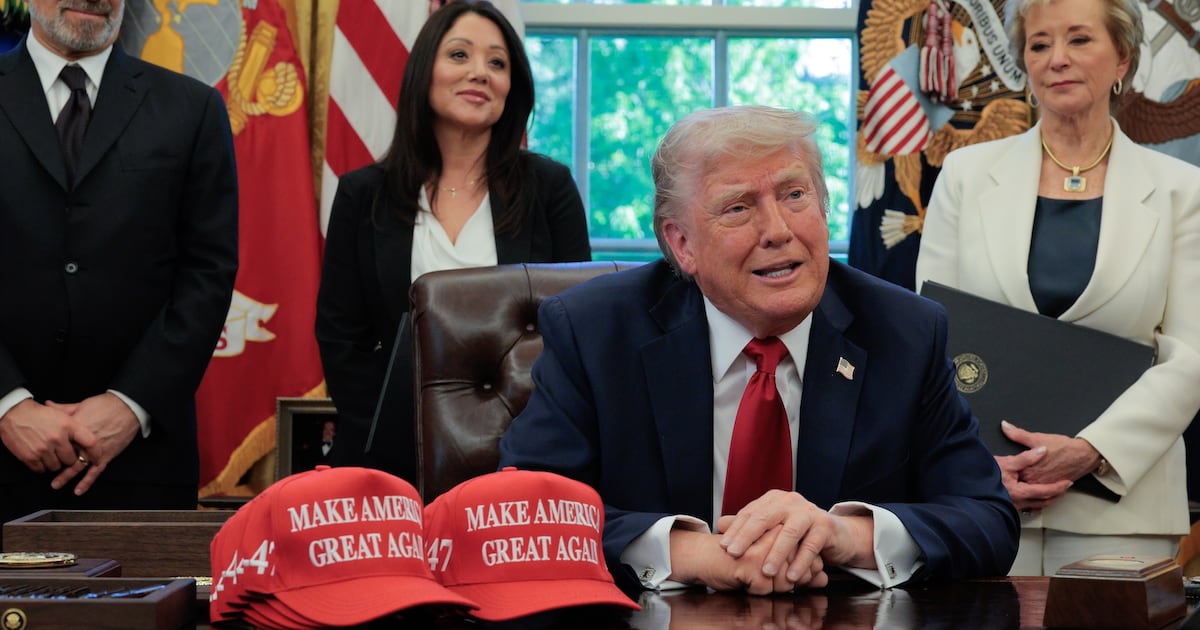
In the space of the last month, Americaâs climate-denying President may have achieved what a decade of sustainable fashion campaigning has not; Trumpâs tariffs have slammed the brakes on a culture of environmentally destructive excessive consumption, long fuelled by the flow of cheap goods from China.
Ultra-fast-fashion platforms Shein and Temu are already feeling the squeeze. US sales at both fell roughly 20 percent in the last week of April, as consumers recoiled from price hikes introduced ahead of tariff changes, according to Bloomberg Second Measure, which analyses credit card data.
The wider fashion industry has responded to massive duties on Chinese-made goods (still a large proportion of the footwear and apparel sold in the US) by halting orders with factories. After all, prices would have to more than double on shoes and shirts to maintain margin percentages. The prospect of higher tariffs on other large manufacturing countries is also still looming.
Gene Seroka, the executive director of the Port of Los Angeles is expecting a 35 percent drop in container volume from Asia next week. This trend will translate into less âstuffâ available for sale in the back half of the year. When pressed about empty shelves, Trump conceded that he was expecting Americans to make do with fewer things. âMaybe the children will have two dolls instead of 30 dolls,â the President said. âAnd maybe the two dolls will cost a couple of bucks more than they would normally.â What is true for dolls is equally true for handbags and sneakers.
According to Columbia University historian Adam Tooze, âFor the first time we have an American politics that actually talks about getting by with less.â
An Experiment in Degrowth
At first blush, the pending consumption contraction could be seen as an experiment in degrowth: the popular leftist economic theory that argues perpetual GDP growth is inconsistent with finite planetary boundaries and a planned reduction of energy and resource use is needed to bring the economy back into balance with the needs of the planet.
Tariff-induced price increases will indeed lead to less consumption, less growth and, as a result, less environmental damage. But this will not be a âplanned reduction,â focused on specific polluting sectors, and there will be no matching investments in public services, cleaner energy or development efforts, which degrowth proponents like the economic anthropologist Jason Hickel argue offer a pathway to cleaner, fairer and happier societies.
Instead, the sudden economic spasm that will result from Trumpâs tariffs will simply destroy value, with the worst effects falling on the most vulnerable, from poor Americans (who will face sticker shock, not just for fashion, but also for more everyday necessities) to garment workers, whose jobs are now at risk.
A Better Way
It is beyond me to predict when the tariff standoff between the US and China will end. Both sides have a great deal to lose.
It is likely, however, that resolution will come, and with a deal, a quick resumption of production and consumption patterns that render the environmental impacts of the standoff moot. In the meantime, nothing about the way the industry operates will have improved. On the contrary, it is likely that what incremental progress has been achieved to date will be placed at risk by the financial pressures on companies created by the trade war.
A far more effective economic tool to curb the industryâs footprint would be targeted and progressive taxes focused on environmental sins, like carbon emissions and plastics (fossil-fuel-based polyester should not be the cheapest textile on the market). The proceeds should then be reinvested in programmes that help decarbonise the supply chain. Similarly, a real go at tackling the growing global glut of fashion waste requires meaningful extended producer responsibility fees to fund circular infrastructure, like collection and sorting facilities and recycling plants.
Yes, these actions will make fashion more expensive. That is OK. After all, does anyone really believe that another $11 pair of jeans is either necessary or good for the planet?

